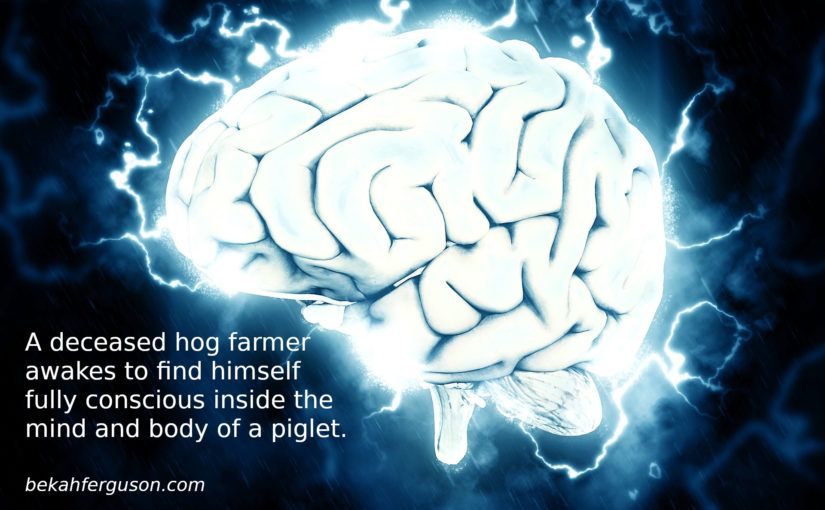A short story by Bekah Ferguson.
(41 min read)
Howard Reed submitted the signed paperwork promising he’d donate his brain to science, and died six years later.
At the hospital where he passed away late one night, a Brain Bank employee arrived to collect and transport the organ to a nearby laboratory. But unbeknownst to family, it never arrived there. Instead, during transit, his brain was deliberately swapped with a John Doe’s. Thus, as far as everyone was concerned, Reed’s brain had gone just where it was supposed to go and where it would be sliced in half: one side to be frozen, and the other to be set in formaline for the purpose of autopsy. The identity of the donor would forever remain anonymous to the researchers who would only receive such tissue after their protocols were first approved by a Research Ethics Board. But Reed’s brain was not to be divided after all; nor was it anonymous. At least, not to the two scientists who bided their time awaiting his death, and had deliberately stolen it.
Inside their undercover laboratory—housed in the back corner of a private, sequestered hanger—they set to work. The equipment had long been prepped for the expected arrival and after a few switches were flipped here and a few keys punched there, machines and pumps were roused from their slumber. Industrial lighting flooded the corner area with artificial sunlight, above which black tarps had been draped to the floor in a tent-like fashion; blotting out the light. Any rare vehicle that might happen to drive by on the dirt road out front would see only the moonlit sketching of an abandoned building.
Cradled by latex-gloved hands, the brain was removed from its temperature-controlled traveling case and set down within a round glass container, not unlike an astronaut’s helmet. The body of the man had indeed perished but his brain was still very much alive. Micro-circulation was restored to the blood vessels with absolute precision from bags of artificial blood, and electrodes were inserted all over the organ. Attached tubing trailed away from both the brain and the container: down over the side of the lab counter, straight across the floor, and up into the sides of a tubular liquid-filled vat.
Through the oval windows of the vat a two hundred and eighty pound Sus domesticus pig floated in the greenish water; a myriad of internal cables gathering together where they’d been attached around the sides of the animal’s skull, connecting to the memory center of its brain. More measures were taken, a lid sealed into place encapsulating the human brain in its preservation chamber, and levels were checked on the various computer screens. Then the meticulously-planned upload commenced.
With the next few moments, the deceased Howard Reed awoke to find himself fully conscious inside the mind and body of a piglet.

